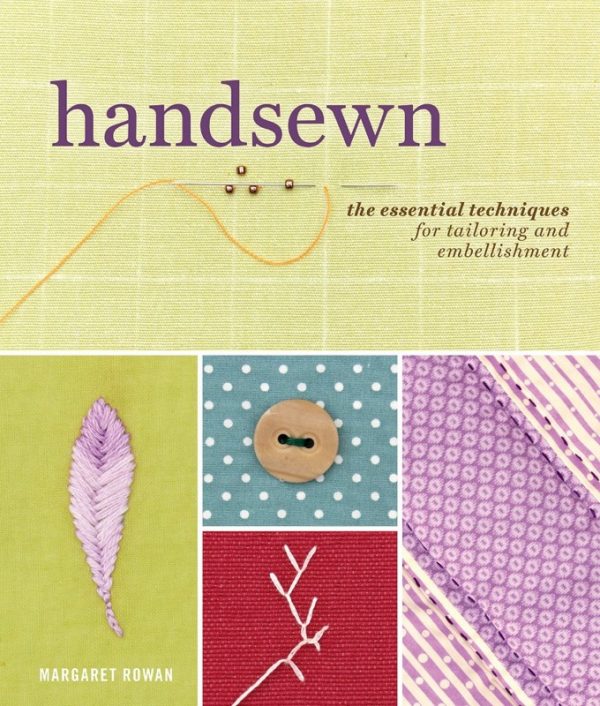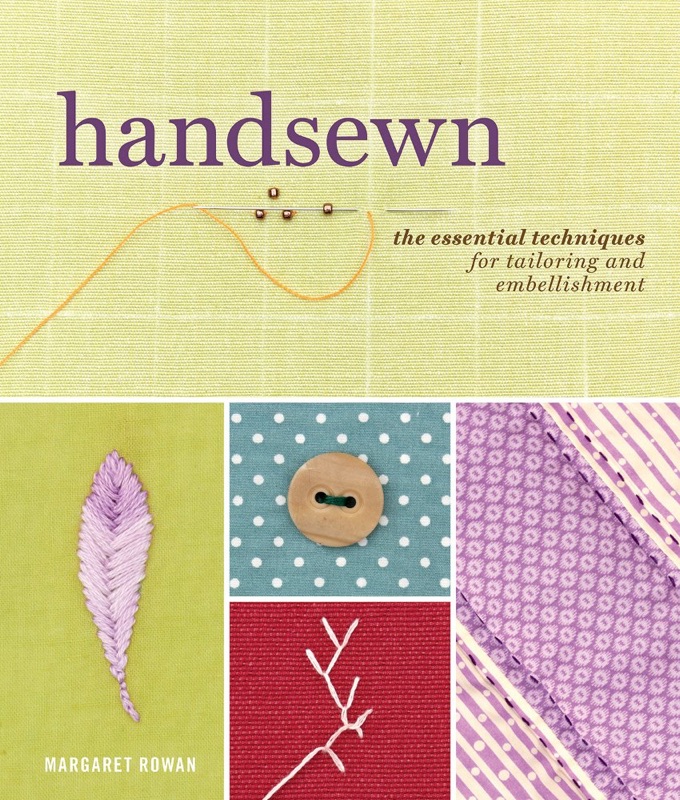We purchased Handsewn: The Essential Techniques for Tailoring and Embellishment by Margaret Rowan to help give some direction to students who were learning hand sewing and tailoring. We needed something that was comprehensive but wasn’t an embroidery book specifically.

Amazon says of it:
“Take handsewing to the next level!
Sewists are developing increasing interest in heritage handsewing techniques that add beautiful or couturelike finishing touches to the final project. Small handfinished details can quickly become a testament to the style, creativity, and skill of the sewist.
Handsewn offers step-by-step instructions for a comprehensive collection of hand-finishing and embellishing techniques, including hems, edges, buttonholes, cuffs, tacking layers and linings, attaching or inserting fabric and trims, embroidery, quilting, applique, and cutwork, among others.
In addition to the stitch technique directory, a section at the beginning covers supplies, tips and tricks, and how to troubleshoot mistakes. The book also includes illustrations and templates of sample decorative motifs with advice for using, transferring, and combining motifs, as well as creating one’s own.
Handsewn is an encyclopedic reference guide to all the hand-finishing techniques that elevate a good sewing project into something outstanding.”
We are delighted to tell you guys that this is SUCH a perfect hand sewing book. Just perfect.
The thing is that you can either find hand sewing in the functional category or the decorative category, but then you are left to figure out for yourself where the two overlap and how this stitch is a first-cousin to that one or that one is a half-sibling to the other. This means buying tons of books from different areas to get a sense of things.
This is a beautiful melding of those two worlds.
We wish that they would have listed the different names of the stitches in addition to what they are calling them. They mention the use of the stitch such as a “ladder stitch is sometimes also used for x or y” but for as comprehensive as this book is they neglect this and we think it would be more/very useful if maybe they included it in a newer edition.
So if you have read a tailor’s blog where they mention a cross-stitch (not the embroidery version) to join interfacing to seam allowances, but then read another dressmaking tailor (or hear Tchad say) to do a catch-stitch, but then don’t put together that *this* book is calling both of those a *herringbone* stitch (not exactly the embroidery version) you are… well, not in trouble, really, but it would be confusing.
Still and all, we are THRILLED with this book. One of the most useful hand sewing books We’ve found.
